Evolutionary Ecology
The department of Evolutionary Ecology gathers complementary skills in behavioural ecology, population dynamics, population biology, community ecology, and methodology (statistics and modelling). The research done in the department aims at studying how animal species evolve in a changing world by understanding the causes of the evolution of traits, adaptations and interactions. For that, we consider different levels of organization from individuals to populations and communities. Because organisms cannot be considered isolated from other biotic factors, we consider pathogens but also competing species within communities.
We study how individuals adapt to their environments that are largely impacted by anthropic pressures, and how life history traits and behaviour evolve in response to these pressures. Although we mainly focus on phenotype, we more and more consider the mechanistic link between the genotype and the phenotype. We develop the theoretical framework of our discipline through a conceptual and modeling approach. In parallel, we test hypotheses that arise from theoretical predictions through experimental, comparative and observational approaches on different biological models (insects, birds, mammals). Experimental approaches are developed in the laboratory (insect model) and in natura (bird, insect and mammal models). Observational and comparative research is mainly concerned with vertebrates. Our approaches are also, and increasingly, interested in the mechanisms of adaptive responses. In addition to the classical approaches of demographic analysis and trait change, methods of ecophysiology, chemical ecology and molecular biology are used.
Our department hosts several long-term studies of wild populations of different species. These long-term studies offer a valuable way to understand how biotic and abiotic factors affect individuals’ life history traits, and the functioning of populations in natura. Five populations of mammalian species are thus monitored for several years (more than 40 years on roe deer, 30 on Alpine marmots, 25 years on cats, 16 years on zebras, and 20 years on impala). Two of our study sites (La Sassière in Vanoise National Park (Alpine marmots) and Hwange National Park) have been certified as “Site d’Etude en Ecologie Globale” (SEEG), and two (ZA “Hwange” and ZA “Antarctic and sub-Antarctic”) were certified as “Zone Atelier” by the CNRS.
The department of Evolutionary ecology is also largely involved in training activities. Lastly, we also have strong socio-economic relationships. Indeed, because we address questions of major societal interest (global warming, public health) we tightly collaborate with socio-economic partners (Office Français de la Biodiversité, Vanoise National Park, Hwange National Park in Zimbabwe, Office National des Forêts, etc.) and participate to general public and media events.
Publications
Display of 931 to 960 publications on 2459 in total
Genetic Characterization of Toxoplasma gondii DNA Samples Isolated From Humans Living in North America: An Unexpected High Prevalence of Atypical Genotypes
Journal of Infectious Diseases . 218 ( 11 ) : 1783-1791
Journal article
see the publicationSterile insect technique and Wolbachia symbiosis as potential tools for the control of the invasive species Drosophila suzukii
Journal of Pest Science . 91 ( 2 ) : 489-503
Journal article
see the publicationTransposable Element Dynamics in an Invasive Species
Congrès National des Éléments Transposables (CNET 2018) .
Conference paper
see the publicationDevelopment of a PCR-RFLP assay to identify Drosophila melanogaster among field-collected larvae
Ecology and Evolution . 8 ( 20 ) : 10067 - 10074
DOI: 10.1002/ece3.4453
Journal article
see the publicationPlasticité phénotypique et réponses adaptatives au changement climatique
L’adaptation au changement climatique . 978-2-271-09482-7 : 95-102
Book chapter
see the publicationThe neoteny-helper hypothesis: when to expect and when not to expect endocrine mechanisms to regulate allo-parental care?
Physiology & behavior . 193 ( Pt A ) : 127-134
Journal article
see the publicationComplex ecological interactions of Staphylococcus aureus in tampons during menstruation
Scientific Reports . 8 ( 1 ) : 9942
Journal article
see the publicationIndividual heterogeneity and capture-recapture models: what, why and how?
Oikos . 127 ( 5 ) : 664-686
DOI: 10.1111/oik.04532
Journal article
see the publicationGeneral conclusion to the special issue Moving forward on individual heterogeneity
Oikos . 127 ( 5 ) : 750-756
DOI: 10.1111/oik.05223
Journal article
see the publicationEnvironmental drivers of varying selective optima in a small passerine: A multivariate, multiepisodic approach
Evolution - International Journal of Organic Evolution . 72 ( 11 ) : 2325 - 2342
DOI: 10.1111/evo.13610
Journal article
see the publicationBouquetins du Bargy et infection brucellique : que nous révèle la génétique ?
Epidémiologie et Santé Animale . 74 : 17-24
Journal article
see the publicationFacteurs associés à la détection de Coxiella burnetii dans les prélèvements de poussière en élevages de ruminants domestiques
Académie Vétérinaire de France .
Conference paper
see the publicationMicrobial warfare between competing Drosophila species shapes niche partition
International Conference on Ecological Sciences (Sfécologie 2018) . : 825 p.
Conference paper
see the publicationInfluence of extreme heat or cold stresses on body pigmentation of Drosophila melanogaster
Journal of Thermal Biology . 72 : 118 - 126
Journal article
see the publicationDemographic stochasticity drives epidemiological patterns in wildlife with implications for diseases and population management
Scientific Reports . 8 ( 1 )
Journal article
see the publicationBeyond neutrality: disentangling the effects of species sorting and spurious correlations in community analysis
Ecology . 99 ( 8 ) : 1737-1747
DOI: 10.1002/ecy.2376
Journal article
see the publicationAlgorithms and biplots for double constrained correspondence analysis
Environmental and Ecological Statistics . 25 ( 2 ) : 171-197
Journal article
see the publicationGene flow and adaptive potential in a generalist ectoparasite
BMC Evolutionary Biology . 18 : 99
Journal article
see the publicationtRophicPosition , an r package for the Bayesian estimation of trophic position from consumer stable isotope ratios
Methods in Ecology and Evolution . 9 ( 6 ) : 1592-1599
Journal article
see the publicationImmunosenescence patterns differ among populations of a long-lived mammal.
Journée Annuelle 2017 du LabEx ECOFECT . : http://oldecofect.universite-lyon.fr/
Poster
see the publicationAge and environmental life-conditions impact telomere dynamics in a wild mammal
International Conference on Understanding Diversity in Telomere Dynamics .
Conference paper
see the publicationMise en place d'une expérience avec le grand public : entre recherche, vulgarisation et pédagogie
Revue Economique . 68 ( 5 ) : 941-953
Journal article
see the publicationImmunosenescence patterns in two populations of a long-lived mammal.
Réunion du groupe Immuno-écologie du Réseau Ecologie des Interactions Durables .
Conference paper
see the publicationDatabase Of Weeds In Cultivation Fields Of France And Uk, With Ecological And Biogeographical Information
Other publication
see the publicationModélisation biodynamique de l'accumulation de composés organiques persistants par des invertébrés benthiques d'eau douce
SEFA . : 1
Poster
see the publicationDe l’envol à la première reproduction: aspects écologiques et évolutifs des traits d’histoire de vie de jeunes oiseaux marins longévifs
Thesis
see the publicationContrasting effects of climate and population density over time and life-stages in a long-lived seabird
Functional Ecology . 31 ( 6 ) : 1275-1284
Journal article
see the publicationElevated natural environmental noise impacts breeding success and vocal communication in a songbird
Behaviour 2017: 35th International Ethological Conference (IEC) and the 2017 Summer Meeting of the Association for the Study of Animal Behaviour (ASAB) .
Poster
see the publicationAdaptations des communications acoustiques au bruit environnemental et succès reproducteur chez le cincle plongeur Cinclus cinclus.
47ème Colloque de la Société Française pour l’Etude du Comportement Animal (SFECA) .
Conference paper
see the publicationCaractère fonctionnelle des plantes adventices : comparaison avec les espèces prairiales
Journée "Approche fonctionnelle pour la gestion des espèces adventices et de la flore des linéaires non cultivés » .
Conference paper
see the publication
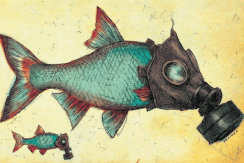
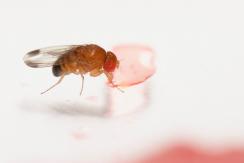
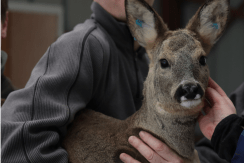
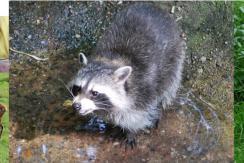
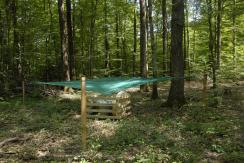
You also, comment on this article